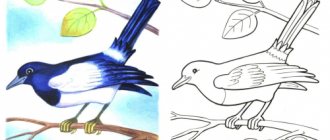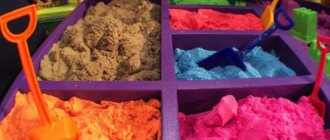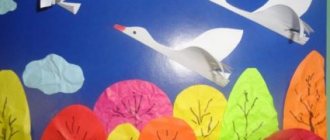Project “Feed the birds in winter”
- April 9, 2016
Conference “Project activity in an educational institution - 2016”
Nomination “Children’s project in a preschool institution”
Introduction
We often come across this situation: when a child sees birds, he most often tries to scare them away, and less often expresses surprise. Talking with children, I find out that children know little about birds. An idea emerges - to introduce children to birds more closely, teach them to watch them, and take care of them. Birds need the most care during the cold season. That is why the Birds at the Feeder project was developed.
Project goal: to create conditions for the development of children's research activities.
Research activity “Birds at the feeder”
Problem . Why don't all birds fly to warmer climes?
Hypothesis. Probably, wintering birds are not afraid of the cold and can find food themselves.
Goal: find out how birds live in our city in winter.
Tasks:
1. Find out which birds remain for the winter.
2. Determine what birds eat in winter.
3. Make feeders and feed the birds.
4. Involve friends in helping birds in winter.
Object of study : wintering birds of our city.
Research methods that the child determines for himself:
- Think yourself.
- Ask someone else.
- Look in a book, get information on the Internet.
- Watch.
Theoretical stage of the study
I turned to my older brother, my parents, and my teachers for help. It turns out that birds live next to us both in summer and winter, and there are not so few of them. Sparrows, magpies, pigeons, bullfinches, tits, waxwings, crows, crossbills, woodpeckers, and owls winter in our city. I wanted to know more about each bird. My brother helped me with this. Using the Internet, on the pages of books, I looked at photographs of birds and learned about the peculiarities of their wintering. Here is what I learned:
Wintering birds can tolerate cold weather. For example: an owl and a woodpecker are hiding in the hollows of trees. Tits and magpies fly to human habitation. Crows, jackdaws, and pigeons spend the night huddled close to each other. Feathers help birds stay warm. Birds have air between their feathers. It keeps the cold out and retains the heat. So they don't freeze.
Wintering birds can find their own food - berries and fruits. For example, a woodpecker can get insects from under the bark. Seeds that ripen in autumn on trees and shrubs are also food for birds. The crossbill even hatches chicks in January because there is a lot of food for them - seeds from spruce cones.
Practical stage of research
I was very surprised when I learned that tits love lard. I thought, where does she get it? I remembered that tits, in order to survive in winter, fly closer to human habitation.
1. Making feeders.
Together with my older brother, I made different feeders and hung them in my yard and in the kindergarten area. I asked my parents and teachers what I could feed the birds. And together with their friends they began to watch. Sparrows, crows and pigeons were the main guests. But the titmice flew in when we left the walk. They seem to be very shy and cautious.
2. Bird feeding.
While feeding the birds, I observed and learned that:
- Almost all birds eat sunflower seeds and, first of all, tits.
- tits do not like melon and pumpkin seeds, but sparrows eat them with pleasure.
- Millet and millet are the favorite food of sparrows.
- Tits and sparrows eat bread crumbs. But bread in large quantities is harmful to birds.
But the bullfinches never came to my feeder; I prepared rowan berries for them. But I will wait for them - I hope that they will arrive.
Research results:
1. Now I know wintering birds and can identify them by their appearance.
2. Created an album about wintering birds.
3. I composed a story about birds for the children of my group according to plan: appearance, where they live, what they eat.
My hypothesis was confirmed: only those birds remain for the winter that can withstand the cold and find food for themselves, but they need our help. If you hang feeders and feed the birds, there will be more birds in the spring.
4. I got my friends involved in helping the birds. And now we together make sure that there is food in the feeders and watch them.
5. There are more birds in the kindergarten area and in my yard.
Conclusion: Winter is a difficult period in the life of birds. If a person takes care of them, it will be easier for them to endure cold and hunger.
Author: Mikhail Miklyaev, 7 years old, preparatory school group, MBDOU Combined Kindergarten No. 26 “Spikelet”. Tambov region, Michurinsk. Project manager: Tatyana Anatolyevna Mitrokhina, teacher of the first category, MBDOU Combined Kindergarten No. 26 “Spikelet”, Tambov region, Michurinsk.



